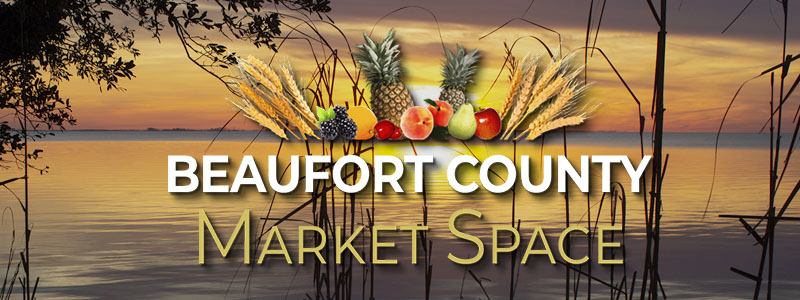Boldly Committed to Truth Telling in the False Face of Fakery
Gone Fishing
Since 1937, the Foster family of Hatteras Island has been helping would-be anglers find their sea legs aboard daily charter boat fishing excursions.
It’s 6:05 a.m. at Hatteras Island, and the sky has brightened to a canvas gray. Captain Ernie Foster has had the diesel engine of the Albatross III warming for 15 minutes. He glances down at the glowing instrument cluster for his last-minute check of engine pressures and temperatures. His mate, Clyde, has stowed all gear from the charter party, loaded fresh bait aboard, and is standing ready to cast off all lines.
Capt. Foster turns from his console, looks down off the bridge, tugs at his baseball cap. “Cast off,” he says. The mate moves swiftly from bow to stern, as the engine, now engaged, inches the boat slowly from her berth with a slight shudder. Two gulls lift off the dock and circle above. The charter party, an attorney from Charlotte and his three sons, lean against the stern rail and watch the Hatteras harbor grow smaller as they pull away.
Since the sport of offshore charter boat fishing began in North Carolina back in the 1930s, thousands of anglers have descended on the Outer Banks. They come from all across the United States and even abroad, strapping themselves into fighting chairs to engage in tests of skill, determination, and strength — and experience a rich North Carolina tradition.
Offshore fishing is popular along our nation’s Eastern Seaboard from the deep, cold waters off the coast of Maine to the shallow, tropical waters that brush the Florida ooastline. But the odds of landing a mahimahi, blue or white marlin, amberjack, striped bass, yellowfin tuna, sailfish, king or spanish mackerel, shark, barracuda, or wahoo, are highest off the Outer Banks.
While offshore fishing can be enjoyed along most of the Carolina coast — from Oregon Inlet south to Sunset Beach — the area that draws the most attention is Hatteras Island. Part of the reason is heritage; enthusiasts agree that Hatteras is where the sport took shape.
 Cape Hatteras and the constant breakers upon its unblemished shores.
Cape Hatteras and the constant breakers upon its unblemished shores.
In 1937, Ernal Foster decided to build a boat that could be used for commercial fishing in the winter months and charter fishing the rest of the year, when the warm waters of the Gulf Stream move closer to the Outer Banks and allow for one-day trips.
The old man and the sea
Foster was born on Hatteras Island in 1910. During the early 1930s, after returning from a two-year stint in the U.S. Coast Guard on eastern Long Island, New York, Foster worked with a small boat of his own, carrying passengers, mail, or whatever he could find, between the islands of the Outer Banks. He also fished commercially with his father — sometimes learning hard lessons about the unpredictable ferocity of the Atlantic Ocean off the Hatteras coast.
Over the next six decades, Foster’s reputation for “finding the fish” provided him and his family with a gratifying lifestyle — one not driven by fame and fortune but by hard work and the pleasure of forming relationships with folks who come back year after year for the fish and the friendship.
Ernal’s son Ernie has been a charter boat captain since the mid-1960s. Prior to that, as soon as he could walk and hold a pole, he was learning the business from his father. Today, Ernie Foster is one of only three remaining native-born captains on Hatteras. He continues to operate The Albatross Fleet — the three charter fishing boats his father had built between 1937 and 1953.
His customers have told him he gives them what newer boats and younger captains cannot — a taste of a rich legacy. To Foster, “fishing is more than just how many fish you put on the dock — it’s being able to do something really unique, something you can’t do at a theme park.”
Charter party
Offshore fishing is a business that relies heavily on repeat customers. Although a handful of his customers are first-time or infrequent anglers, most have become, well, hooked. “I’ve got a client whose father — 55 years ago — began fishing with my father, so he’s a second-generation customer.”
Boat design has changed dramatically over the years, but Foster has remained faithful to the unique design of his Albatross boats. “We aren’t the fastest or most expensive boats, but we like to feel we give our customers the same exciting fishing experience now as anglers had 60 years ago,” he says. “With us, tradition matters.”
While Foster’s boats haven’t changed much structurally, he’s upgraded them with the latest navigation and communication equipment. “When my father started going out, he used a compass and his watch to navigate — and he used to watch the weed lines and birds for spotting fish.” Now, Foster uses Loran and GPS navigation to come within 10 feet of a favorite fishing spot — usually shipwrecks from World War II. The waters off the North Carolina coast are an infamous graveyard for ships of the past three centuries — from sailing vessels to ships sunk by German U-2 boats during World War II — and Foster has become a curator of sorts during charter fishing excursions. “Most people like to hear the history of a wreck when we’re fishing directly over one,” he says.
Foster admits to missing the sense of accomplishment that came from finding the fish more instinctively but also acknowledges the convenience of modern-day electronics. “They come for the fish, so we need to find them — as quickly as we can.” And fish is what they get. Foster says that it’s not uncommon to boat several tuna in excess of 200 pounds. “Seven or eight years ago, we were catching between 10 and 30 tuna a day.”
Plenty of fish in the sea
The North Carolina Division of Marine Fisheries keeps a close eye on the fishing business — both commercial and recreational. Their data demonstrates the growing popularity of the sport. According to Doug Mumford, recreational statistics coordinator for the division in Washington, the number of charter offshore recreational fishing vessels has increased 80 percent — from 230 in 1999 to more than 400 as of February 2003. “Those numbers show why North Carolina has the largest number of fish landings on the East Coast,” Mumford says. “We’re second only to California.”
Nancy Fish (yes, it’s her real name), public information officer for the division in Morehead City, beams with pride when asked about the state of fishing off the North Carolina coast. “Recreational fishing along our coastline has seen a 46 percent increase over the last five years,” she says. “We estimate that more than 2 million people took advantage of the fishing opportunities last year — they come to fish.”
When he is not sailing his boat, Christine, Bryan Oesterreich writes for this and other regional publications, and teaches English at Beaufort County Community College.
Go Back
It’s 6:05 a.m. at Hatteras Island, and the sky has brightened to a canvas gray. Captain Ernie Foster has had the diesel engine of the Albatross III warming for 15 minutes. He glances down at the glowing instrument cluster for his last-minute check of engine pressures and temperatures. His mate, Clyde, has stowed all gear from the charter party, loaded fresh bait aboard, and is standing ready to cast off all lines.
Capt. Foster turns from his console, looks down off the bridge, tugs at his baseball cap. “Cast off,” he says. The mate moves swiftly from bow to stern, as the engine, now engaged, inches the boat slowly from her berth with a slight shudder. Two gulls lift off the dock and circle above. The charter party, an attorney from Charlotte and his three sons, lean against the stern rail and watch the Hatteras harbor grow smaller as they pull away.
Since the sport of offshore charter boat fishing began in North Carolina back in the 1930s, thousands of anglers have descended on the Outer Banks. They come from all across the United States and even abroad, strapping themselves into fighting chairs to engage in tests of skill, determination, and strength — and experience a rich North Carolina tradition.
Offshore fishing is popular along our nation’s Eastern Seaboard from the deep, cold waters off the coast of Maine to the shallow, tropical waters that brush the Florida ooastline. But the odds of landing a mahimahi, blue or white marlin, amberjack, striped bass, yellowfin tuna, sailfish, king or spanish mackerel, shark, barracuda, or wahoo, are highest off the Outer Banks.
While offshore fishing can be enjoyed along most of the Carolina coast — from Oregon Inlet south to Sunset Beach — the area that draws the most attention is Hatteras Island. Part of the reason is heritage; enthusiasts agree that Hatteras is where the sport took shape.
 Cape Hatteras and the constant breakers upon its unblemished shores.
Cape Hatteras and the constant breakers upon its unblemished shores.
In 1937, Ernal Foster decided to build a boat that could be used for commercial fishing in the winter months and charter fishing the rest of the year, when the warm waters of the Gulf Stream move closer to the Outer Banks and allow for one-day trips.
The old man and the sea
Foster was born on Hatteras Island in 1910. During the early 1930s, after returning from a two-year stint in the U.S. Coast Guard on eastern Long Island, New York, Foster worked with a small boat of his own, carrying passengers, mail, or whatever he could find, between the islands of the Outer Banks. He also fished commercially with his father — sometimes learning hard lessons about the unpredictable ferocity of the Atlantic Ocean off the Hatteras coast.
Over the next six decades, Foster’s reputation for “finding the fish” provided him and his family with a gratifying lifestyle — one not driven by fame and fortune but by hard work and the pleasure of forming relationships with folks who come back year after year for the fish and the friendship.
Ernal’s son Ernie has been a charter boat captain since the mid-1960s. Prior to that, as soon as he could walk and hold a pole, he was learning the business from his father. Today, Ernie Foster is one of only three remaining native-born captains on Hatteras. He continues to operate The Albatross Fleet — the three charter fishing boats his father had built between 1937 and 1953.
His customers have told him he gives them what newer boats and younger captains cannot — a taste of a rich legacy. To Foster, “fishing is more than just how many fish you put on the dock — it’s being able to do something really unique, something you can’t do at a theme park.”
Charter party
Offshore fishing is a business that relies heavily on repeat customers. Although a handful of his customers are first-time or infrequent anglers, most have become, well, hooked. “I’ve got a client whose father — 55 years ago — began fishing with my father, so he’s a second-generation customer.”
Boat design has changed dramatically over the years, but Foster has remained faithful to the unique design of his Albatross boats. “We aren’t the fastest or most expensive boats, but we like to feel we give our customers the same exciting fishing experience now as anglers had 60 years ago,” he says. “With us, tradition matters.”
While Foster’s boats haven’t changed much structurally, he’s upgraded them with the latest navigation and communication equipment. “When my father started going out, he used a compass and his watch to navigate — and he used to watch the weed lines and birds for spotting fish.” Now, Foster uses Loran and GPS navigation to come within 10 feet of a favorite fishing spot — usually shipwrecks from World War II. The waters off the North Carolina coast are an infamous graveyard for ships of the past three centuries — from sailing vessels to ships sunk by German U-2 boats during World War II — and Foster has become a curator of sorts during charter fishing excursions. “Most people like to hear the history of a wreck when we’re fishing directly over one,” he says.
Foster admits to missing the sense of accomplishment that came from finding the fish more instinctively but also acknowledges the convenience of modern-day electronics. “They come for the fish, so we need to find them — as quickly as we can.” And fish is what they get. Foster says that it’s not uncommon to boat several tuna in excess of 200 pounds. “Seven or eight years ago, we were catching between 10 and 30 tuna a day.”
Plenty of fish in the sea
The North Carolina Division of Marine Fisheries keeps a close eye on the fishing business — both commercial and recreational. Their data demonstrates the growing popularity of the sport. According to Doug Mumford, recreational statistics coordinator for the division in Washington, the number of charter offshore recreational fishing vessels has increased 80 percent — from 230 in 1999 to more than 400 as of February 2003. “Those numbers show why North Carolina has the largest number of fish landings on the East Coast,” Mumford says. “We’re second only to California.”
Nancy Fish (yes, it’s her real name), public information officer for the division in Morehead City, beams with pride when asked about the state of fishing off the North Carolina coast. “Recreational fishing along our coastline has seen a 46 percent increase over the last five years,” she says. “We estimate that more than 2 million people took advantage of the fishing opportunities last year — they come to fish.”
When he is not sailing his boat, Christine, Bryan Oesterreich writes for this and other regional publications, and teaches English at Beaufort County Community College.
| Inglourious Basterds | Serial Purpose, Visiting Writers, Literature, The Arts | In Concert: Missy Raines and the New Hip |





















